Suicidal ideation is an emergent condition that demands immediate attention. It has been shown that the time between decision and attempt in patients with suicidal ideations is about ten minutes. Suicide ranks among the top three causes of mortality worldwide for individuals ages 15–44.
Unfortunately, the suicide rate has increased over the past two decades despite renewed efforts to address this crisis. Studies suggest that approximately 90% of individuals who commit suicide suffer from a treatable psychiatric disorder, most commonly a mood disorder. Nevertheless, current treatment options for patients at acute risk for suicide are limited and generally consist of hospitalization plus pharmacotherapy, psychotherapy, ECT, or a combination thereof. It is known that during admission in emergency department (ED), immediately after discharge from ED, and after starting antidepressants are the time points which the subjects are very vulnerable to suicidal ideations (Ballard et al., 2014).
While there are currently no approved pharmacologic treatments for suicidal ideation, patients have seen improvements after ketamine infusions. Ketamine has been found to be a rapid-acting antidepressant in depression. The antidepressant effects of ketamine were first shown in various small studies from 2000 to 2006. A single low, sub-anesthetic dose of ketamine given via intravenous infusion may produce antidepressant effects within four hours in people with depression. Proof-of-concept single-dose and repeat-dose studies with ketamine infusions show significant anti-suicidal effects (Molerao et al., 2018).
Spain’s University of Navarra described ketamine as the single most important advance in the treatment of depression in over 50 years. It has sparked interest in NMDA receptor antagonists for depression and has shifted the direction of antidepressant research and development.
The National Action Alliance for Suicide Prevention has highlighted the importance of identifying fast-acting interventions for suicidal individuals.
How is Ketamine Different?
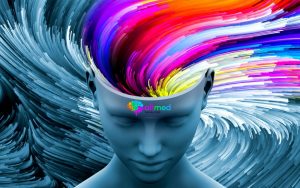
Most depression drugs, including Prozac, are part of a class known as selective serotonin re-uptake inhibitors, or SSRIs. They work by blocking the reabsorption of the neurotransmitter serotonin, increasing the supply available in the brain. Ketamine works on the neurotransmitter glutamate, which is considered crucial in learning and memory formation. While SSRIs can take weeks or months to take effect, ketamine has been shown to begin working in as little as a few hours, making it the first rapid-acting depression drug (Orhurhu et al., 2020).
Rapid Response for Suicidal Ideation with Ketamine Infusion
The Department of Psychiatry at Burdwan Medical College in India recruited twenty-seven subjects with DSM-IV major depression to be assessed on the Scale for Suicidal Ideation (SSI) and the 17-item Hamilton Depression Rating Scale (HDRS).
Subjects were given a single intravenous infusion of ketamine hydrochloride (0.5 mg/kg) and were rated at baseline and at 40, 80, 120, and 230 minutes and 1 and 2 days post-infusion.
The ketamine infusion was effective in reducing the SSI and HDRS scores, the change remained significant from each time point post-infusion (Singh et. al, 2012).
The real strength of this study rests in documenting the rapid, anti-depressant and antisuicidal effect of ketamine in a sample population with major depression. It shows that improvement associated with ketamine infusion reflected a lessening of core depressive symptomatology and is disconnected from ketamine-induced euphoria (Zheng et al., 2018).
Canadian Rapid Treatment Center of Excellence (CRTCE)
The CRTCE, wholly owned by Champignon Brands (CSE: SHRM), is an outpatient clinical and research facility, in Mississauga, Ontario, Canada, that provides off-label IV ketamine treatment for adults (i.e., age ≥ 18 years) with TRD as part of MDD or BD. The CRTCE is a multi-disciplinary center that is comprised of psychiatrists, primary care providers, pharmacists, anesthesiologists, nursing staff, patient coordinators as well as research staff.

Patients receiving IV ketamine treatment demonstrated rapid and robust effectiveness in reducing depressive symptoms severity in adults with either MDD or BD.
Patients are referred to the CRTCE by primary care providers or psychiatrists either in the community or academic-based practices. Treatment-resistant depressive symptoms are the primary focus of clinical attention at the CRTCE, and has administered over fifteen hundred ketamine infusion treatments to date.
Why It Works
Ketamine’s mechanism of action is initially mediated by a noncompetitive N-methyl-D-aspartic acid (NMDA) glutamate receptor antagonist. This property has allowed its’ use as an anestheic for surgical procedures. But recent studies suggest that ketamine also probably acts by disinhibiting GABAergic inputs and thereby accentuating the firing rate of glutamatergic neurons, increasing the presynaptic release of glutamate, thus resulting in increased extracellular levels of glutamate. These higher levels reduce suidical thinking by enhancing neuroplasticity in the brain (Wilkinson et al., 2018).
IV Ketamine reduces MDD and BD depressive symptoms at Canadian Rapid Treatment Center of Excellence (CRTCE)
Major Depressive Disorder and BD are mental disorders most often associated with suicide completion. The Canadian Rapid Treatment Center of Excellence (CRTCE) put IV ketamine into real world practice, by testing its’ effectiveness, tolerability, and safety in adults with treatment resistant depression (TRD). Patients were referred to the CRTCE by primary care providers or psychiatrists within the academic or medical community.
A total of 213 patients received IV ketamine at the CRTCE, with the final sample consist of 207 participants, for a total of 764 observation points. Each patient was assessed prior to their first infusion by a staff psychiatrist affiliated with the CRTCE to confirm a primary diagnosis of a Major Depressive Disorder (MDD) or Bipolar Disorder (BP) and provided psychoeducation regarding diagnosis and treatment.
Eligibility for ketamine requires that person was able to consent to IV ketamine, which involved a full understanding of the risks and benefits of IV ketamine, as well as treatment alternatives. All patients agreed to remain on CRTCE premises for up to one-hour post infusion for safety surveillance. Following IV ketamine infusion, all eligible patients were escorted home by a responsible adult and were prohibited from driving until the following day.
CRTE observed that ketamine infusion treatment significantly reduced suicidal ideation in addition to mitigating depressive symptoms, significant reduction was also observed in concurrent anxiety symptomatology.
All patients at CRTCE begin with two infusions of ketamine hydrochloride 0.5mg/kg diluted in 0.9% saline solution infused over 40-45 minutes. The total dose of ketamine was determined using the patient’s actual body weight (i.e., rather than ideal body weight). For patients, whose body mass index (BMI, kg/m2) was greater than 35kg/m2, the patient’s ideal body weight was used to calculate the dose out of concern for tolerability. Frequency of ketamine administration during the acute protocol was four infusions delivered across 7 – 14 days based on patient availability/scheduling, with the post-acute visit scheduled one week after the fourth infusion.
Significant improvement was also noted when defining improvement according to dual-response and/or remission criteria. It is noteworthy that the response and remission rates observed at CRTE were lower than what has been reported by other randomized double-blind placebo controlled IV ketamine studies.
Johnson & Johnson Spravato wins FDA nod
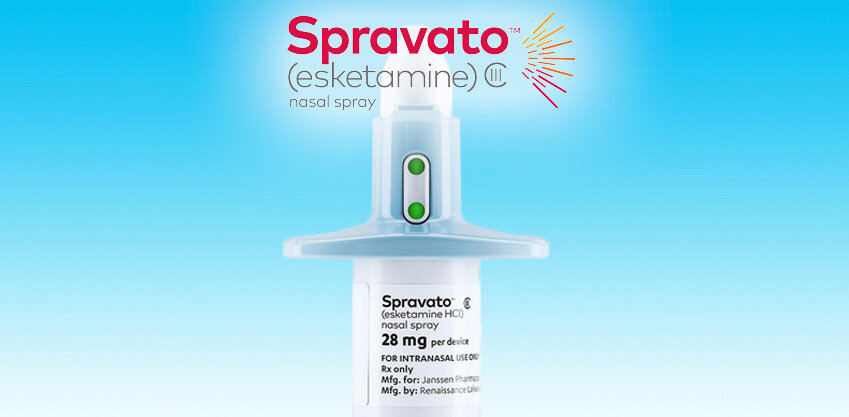
In March, Johnson & Johnson (NYSE: JNJ) won approval for Spravato, es-ketamine, a close cousin of ketamine, for patients with treatment-resistant depression, who make up one-third of the estimated 17.3 million Americans who have experienced depression. Administered via nasal spray, the drug, Spravato, is being billed as the first major therapeutic advance for depression since the introduction of Prozac in 1987. Spravato is undergoing additional studies, and the drugmaker hopes to win approval to use it for treatment of suicidal depression by 2020.
Johns Hopkins will soon begin offering the FDA-approved intranasal treatment to patients with intractable depression in a supervised clinic setting. Administration is medically supervised and patients are monitored by a health care provider for at least two hours. In exchange, these patients are enrolled in a registry to further characterize risks and support (Mincove, 2019).
Conclusion
Systematic review by American Journal of Psychiatry found that ketamine significantly reduced suicidal ideation, with moderate to large effect sizes observed within 1 day that extended 1 week after ketamine administration. Patients treated with ketamine were significantly more likely to be free of suicidal ideation at all postinfusion time points. Change in severity of depressive symptoms was strongly correlated with change in suicidal ideation.
Notably, after controlling for improvement in severity of depressive symptoms, ketamine’s effects on suicidal ideation remained significant. This suggests that ketamine has a specific effect on suicidal ideation. Ketamine infusion findings highlight the possibility of quick intervention strategies to prevent suicidal behavior, which could have enormous public health impact.
The full PDF of this article can be found here.
Content provided via Harvest Moon Research, LLC.
FULL DISCLOSURE: Champignon Brands is a client of Canacom Group, the parent company of The Deep Dive. The company has been compensated to cover Champignon Brands on The Deep Dive, with The Deep Dive having full editorial control. Not a recommendation to buy or sell. Always do additional research and consult a professional before purchasing a security.

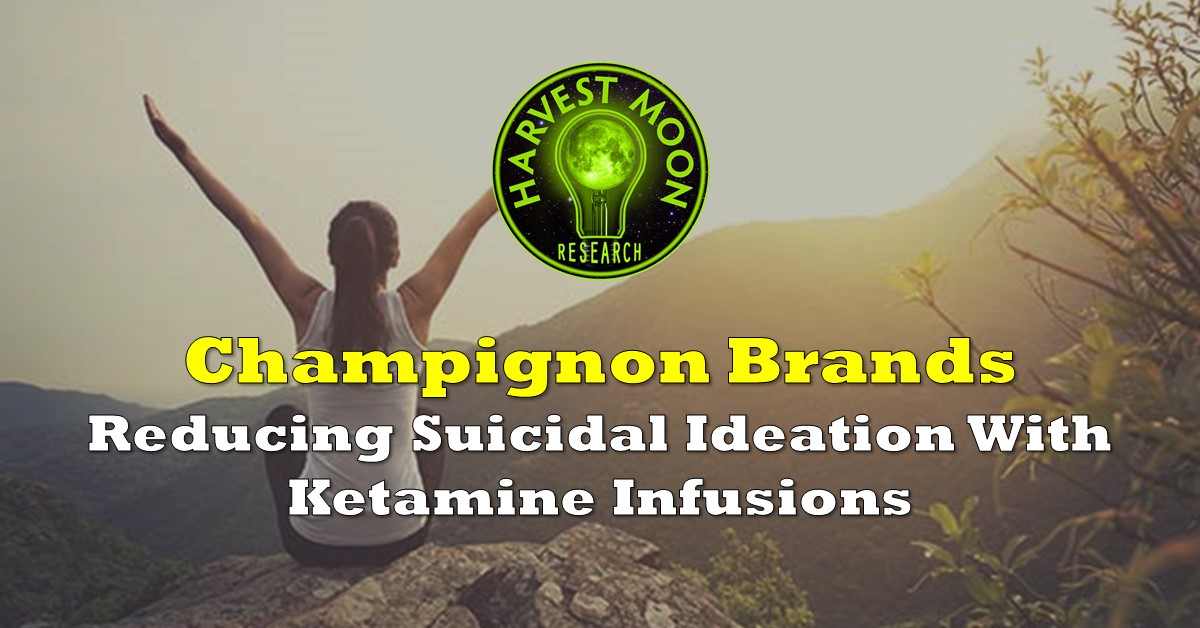



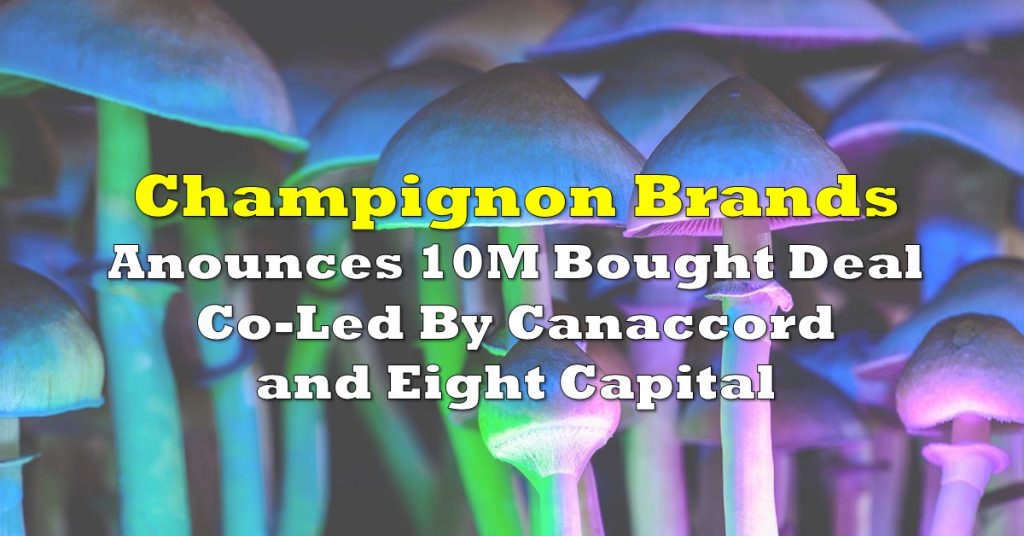
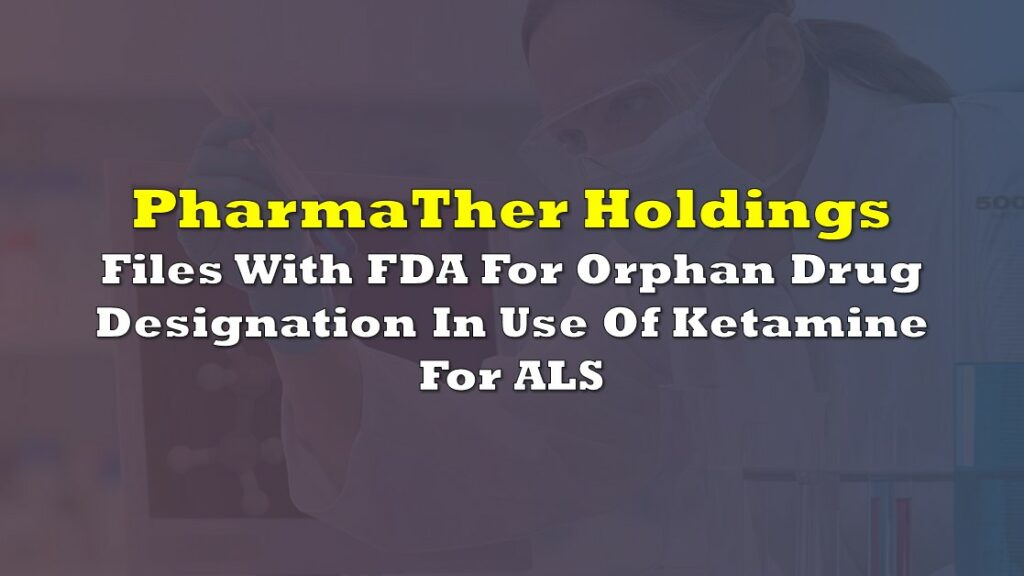
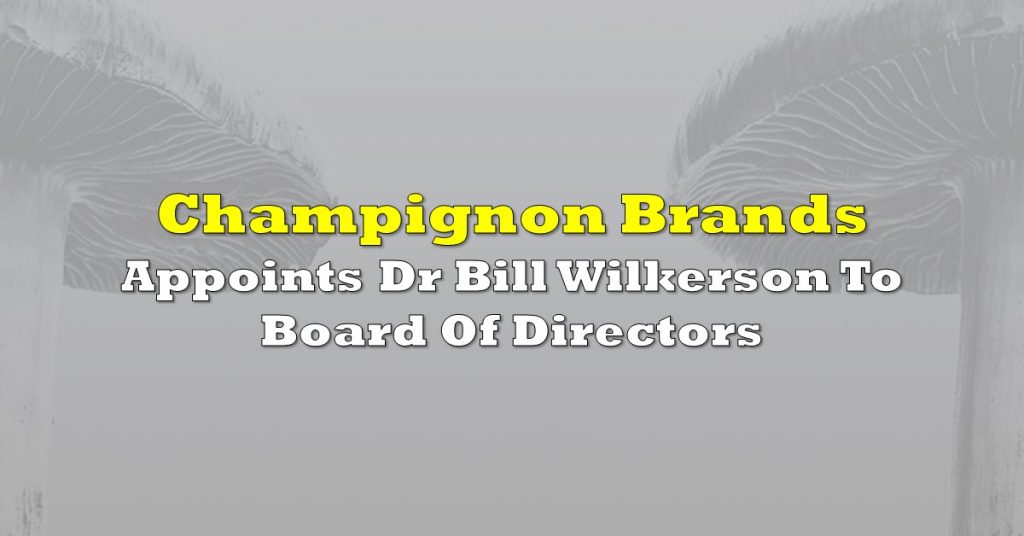
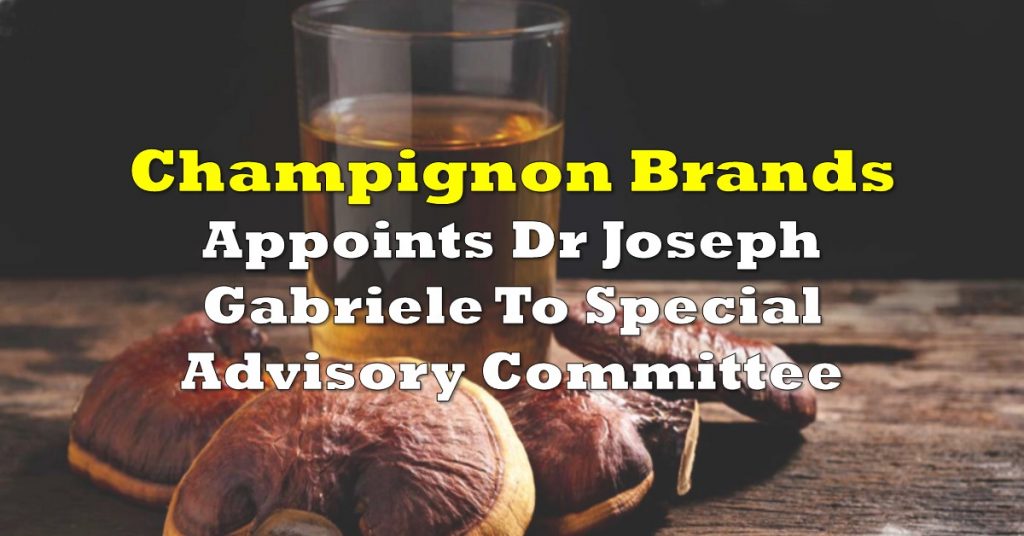
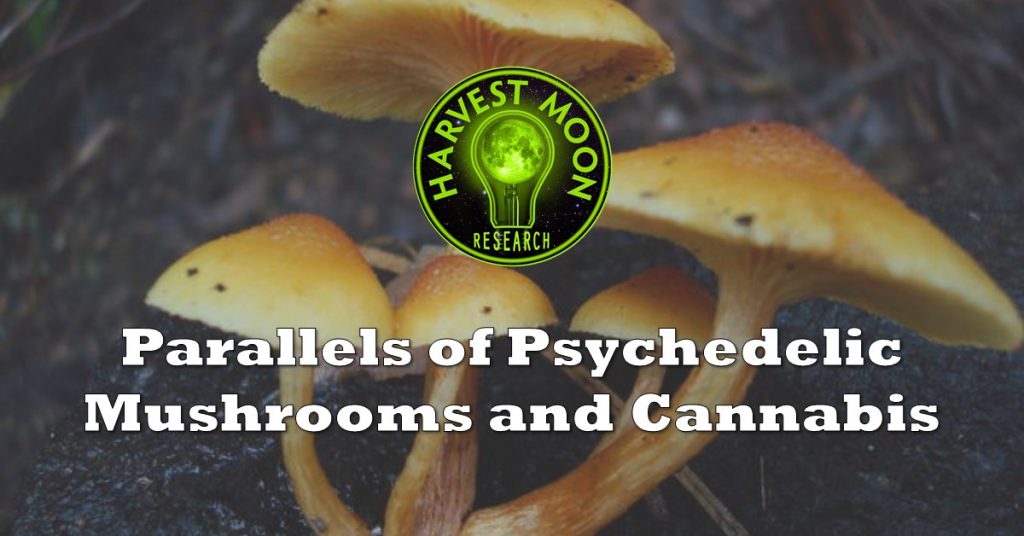
One Response
This is true, but it must be emphasized that it is necessary to do all this in certain doses and be as sure as possible that you have a qualified doctor. In no case can you do it alone, otherwise you can go crazy at least. This is certainly not the most harmful thing that can be. But use in strictly necessary doses will be the best effect of your recovery! So be sure to do this only with a specialist.